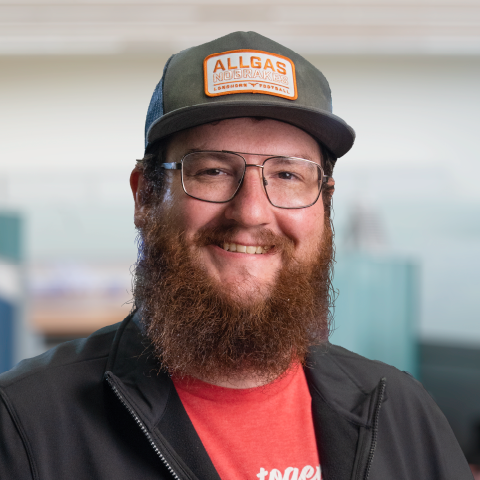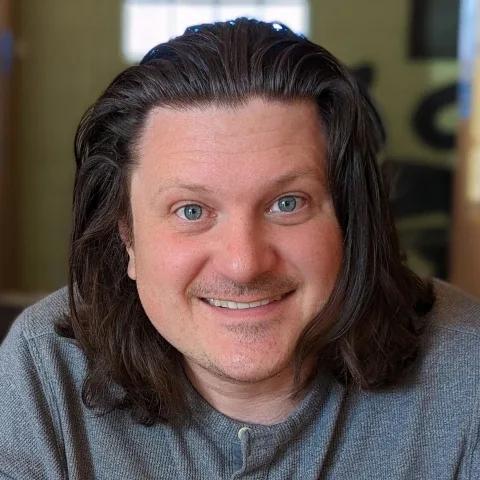Related Topics
Conductive Cuisine
We'll explore an in-depth study conducted by Seth Jenkins, Neil LaTourette, and Brendan Liverman on how boiling time affects hot dog conductivity.
Wanting to be a Wizard - Matt Brown
Matt Brown, shares his career insights, including his experiences working at Tesla and on personal projects like the land speed car and the off-road Viper.
Exploring the Arctic Through Art and Technology with Cy Keener
Cy Keener's work includes a range of data-based efforts to visualize diverse phenomena including ice, wind, rain, and ocean waves.
Other Resources
Circuit Break Podcast
Webinars
Videos
Tour MacroFab's ITAR-Compliant Facility
December 27, 2017, Episode #100
- Iris Weeden
- MacroFab’s Marketing Director
- Award-winning marketer with ten years of experience
- Native Houstonian and lover of music, dogs, and beers
- Episode 100!!!!!!
- The Q&A Episode
- Thanks to our listeners who submitted questions through email and our Slack channel
- Questions
- Brandon Drury
- How in the hell does one survive engineering school?
- What should a person expect to get from a bachelor’s degree in electrical engineering?
- What’s the dumbest/smartest thing a person can do with shift registers?
- What’s a good resource for learning how to prototype? My wires are always a mess. I have no idea what kind of box can hold panel-style outlets. I’m looking for a resource that will improve my ability to take a circuit that works into a form factor, that will allow it to be tested in a halfway reliable way.
- Emmett Naughton
- What’s the best way to get a electrical engineering job? Mostly for somebody with a degree but who doesn’t have job experience in the field.
- Stephen Newberry
- What is the best method for us hardware engineers to monetize our side projects? I personally don’t have the time to handle manufacturing or customer support in the long term. I’ve considered contacting companies to sell a design for a lump sum or royalty based model, but I’ve never gone through with it. What are your suggestions on what will or won’t work best?
- Tom Anderson
- I would like to hear the story behind: What is the worst electrical shock that (one of the guys) has ever had? From Episode #85
- Hyr0n of the AND!XOR team
- What is the difference between a duck?
- All of a sudden one of the following two things no longer exists: Craft Beer OR Lead-Alloy Solder. Which do you pick?
- Zapp of the AND!XOR team
- Would you rather assemble 1,000 duck sized horse PCBs or 1 horse sized duck PCB?
- Brandon Drury
Listen to the guys chat with MacroFab Co-founder Chris Church on the potential impacts of the latest industry tariffs.
About the Hosts

Parker Dillmann
Parker is an Electrical Engineer with backgrounds in Embedded System Design and Digital Signal Processing. He got his start in 2005 by hacking Nintendo consoles into portable gaming units. The following year he designed and produced an Atari 2600 video mod to allow the Atari to display a crisp, RF fuzz free picture on newer TVs. Over a thousand Atari video mods where produced by Parker from 2006 to 2011 and the mod is still made by other enthusiasts in the Atari community.
In 2006, Parker enrolled at The University of Texas at Austin as a Petroleum Engineer. After realizing electronics was his passion he switched majors in 2007 to Electrical and Computer Engineering. Following his previous background in making the Atari 2600 video mod, Parker decided to take more board layout classes and circuit design classes. Other areas of study include robotics, microcontroller theory and design, FPGA development with VHDL and Verilog, and image and signal processing with DSPs. In 2010, Parker won a Ti sponsored Launchpad programming and design contest that was held by the IEEE CS chapter at the University. Parker graduated with a BS in Electrical and Computer Engineering in the Spring of 2012.
In the Summer of 2012, Parker was hired on as an Electrical Engineer at Dynamic Perception to design and prototype new electronic products. Here, Parker learned about full product development cycles and honed his board layout skills. Seeing the difficulties in managing operations and FCC/CE compliance testing, Parker thought there had to be a better way for small electronic companies to get their product out in customer's hands.
Parker also runs the blog, longhornengineer.com, where he posts his personal projects, technical guides, and appnotes about board layout design and components.

Stephen Kraig
Stephen Kraig is a component engineer working in the aerospace industry. He has applied his electrical engineering knowledge in a variety of contexts previously, including oil and gas, contract manufacturing, audio electronic repair, and synthesizer design. A graduate of Texas A&M, Stephen has lived his adult life in the Houston, TX, and Denver, CO, areas.
Stephen has never said no to a project. From building guitar amps (starting when he was 17) to designing and building his own CNC table to fine-tuning the mineral composition of the water he uses to brew beer, he thrives on testing, experimentation, and problem-solving. Tune into the podcast to learn more about the wacky stuff Stephen gets up to.
Special thanks to whixr over at Tymkrs for the intro and outro!